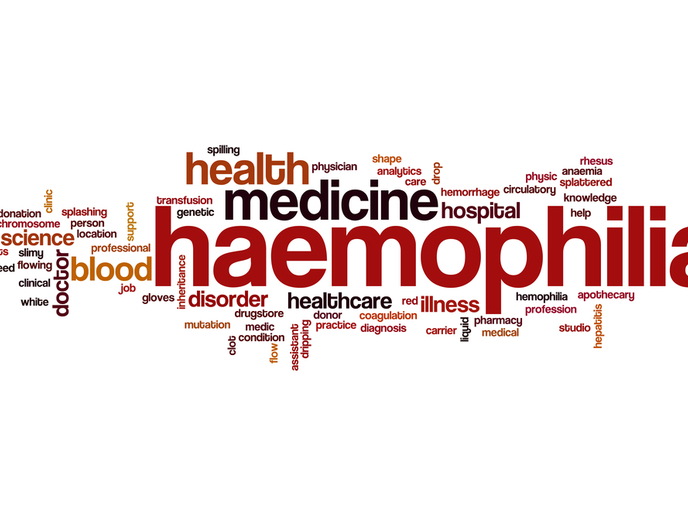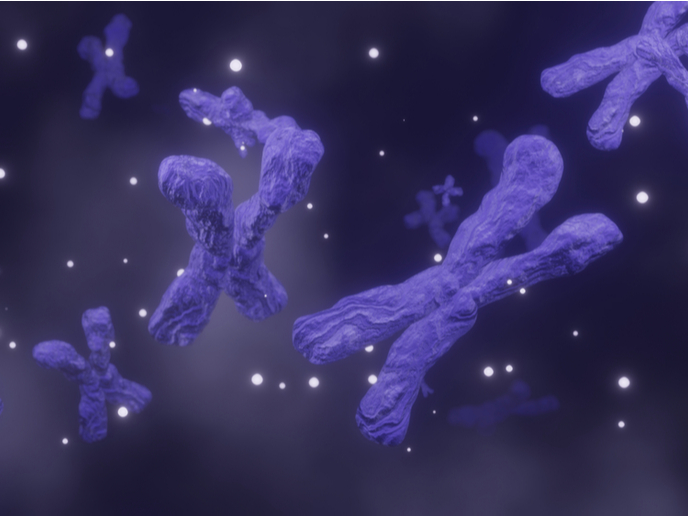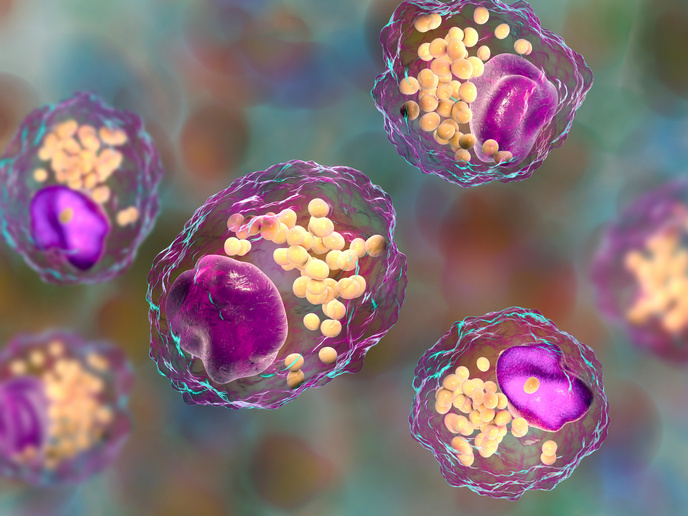Novel therapy for a rare immune disease
HLH is characterised by abnormal immune responses and hyper-inflammation, that can result from impaired cytotoxic T cell function due to genetic mutations (primary HLH) or present in the context of rheumatic diseases, infections and cancer (secondary HLH). The primary forms of the disease, pHLH, typically arise during infancy and are invariably fatal if left untreated. Emapalumab is the first drug specifically developed for the treatment of HLH. Currently, there are no drugs approved for the treatment of HLH. However, given the severity and high mortality rate of the disease, HLH management takes place through the use of off-label drugs. Patients undergo induction therapy with a combination of corticosteroids, chemotherapy and immunotherapy, followed by haematopoietic stem cell transplantation, which is the only curative treatment for primary forms. Induction therapy has not been formally developed for treating HLH and carries significant short and long-term side effects, exposing patients to a high risk for morbidity and mortality. Interferon-gamma (IFN-γ) : a key driver of HLH Emerging evidence indicates a key pathogenic role for IFNγ in HLH. IFNγ is one of the most potent and pleiotropic cytokines of the immune system. Armed with many diverse effects, it is also associated with the pathogenesis and the maintenance of inflammatory diseases. Researchers used animal models of primary HLH where knockout of the molecule perforin and infection with lymphocytic choriomeningitis virus (LCMV) replicates the characteristic features of the human disease. ‘In [these] animal models, neutralisation of IFNγ with a monoclonal antibody reverses the disease and rescues animals from death. Similar results have been obtained in animal models of secondary HLH. In support of IFNγ neutralisation as a therapeutic target in HLH, a correlation between levels of IFNγ and disease severity has been reported in HLH patients,’ states project coordinator Dr de Min. To target IFNγ in patients with HLH, scientists of the EU-funded FIGHT-HLH project have generated and characterised a fully human monoclonal antibody (emapalumab) that neutralises the biological activity of human IFNγ. The key objective of FIGHT-HLH was to advance emapalumab through clinical trials and evaluate its safety and efficacy in patients with primary and secondary HLH to create the first targeted therapy for this disease. In a murine model of HLH secondary to infection, researchers discovered that the amount of IFNγ present in tissues was much larger compared to the amount in circulation. In addition, the hyper-production of IFNγ in tissues is intimately associated to disease progression, therefore supporting the pathogenic role of IFNγ in HLH. Similar to findings in other models of HLH, reducing IFNγ activity improved HLH clinical and laboratory parameters, further supporting IFNγ-targeting as a promising treatment strategy. IFNγ-targeting antibodies: a new orphan drug In the context of the FIGHT-HLH project, emapalumab successfully obtained orphan drug designation both in Europe and in the United States. ‘Also, based on the encouraging pre-clinical and initial clinical results, emapalumab received priority medicine (PRIME) designation from the European Medicinal Agency (EMA),’ adds de Min. The clinical trial in primary HLH ran in 13 sites distributed in 6 European countries and in 8 sites in the United States. The team initially recruited patients who had relapsed after having responded to an initial treatment. During the pivotal phase of this trial, newly diagnosed primary HLH patients could be recruited. Recently, a study in children suffering from secondary HLH has also been initiated. Overall, the targeted nature of emapalumab is expected to deliver efficacy with less toxicity compared to existing treatments. Long-term, the incorporation of this strategy as an induction treatment will improve the clinical outcome of HLH patients.
Keywords
FIGHT-HLH, HLH, IFNγ, emapalumab, orphan drug, monoclonal antibody, perforin, LCMV







